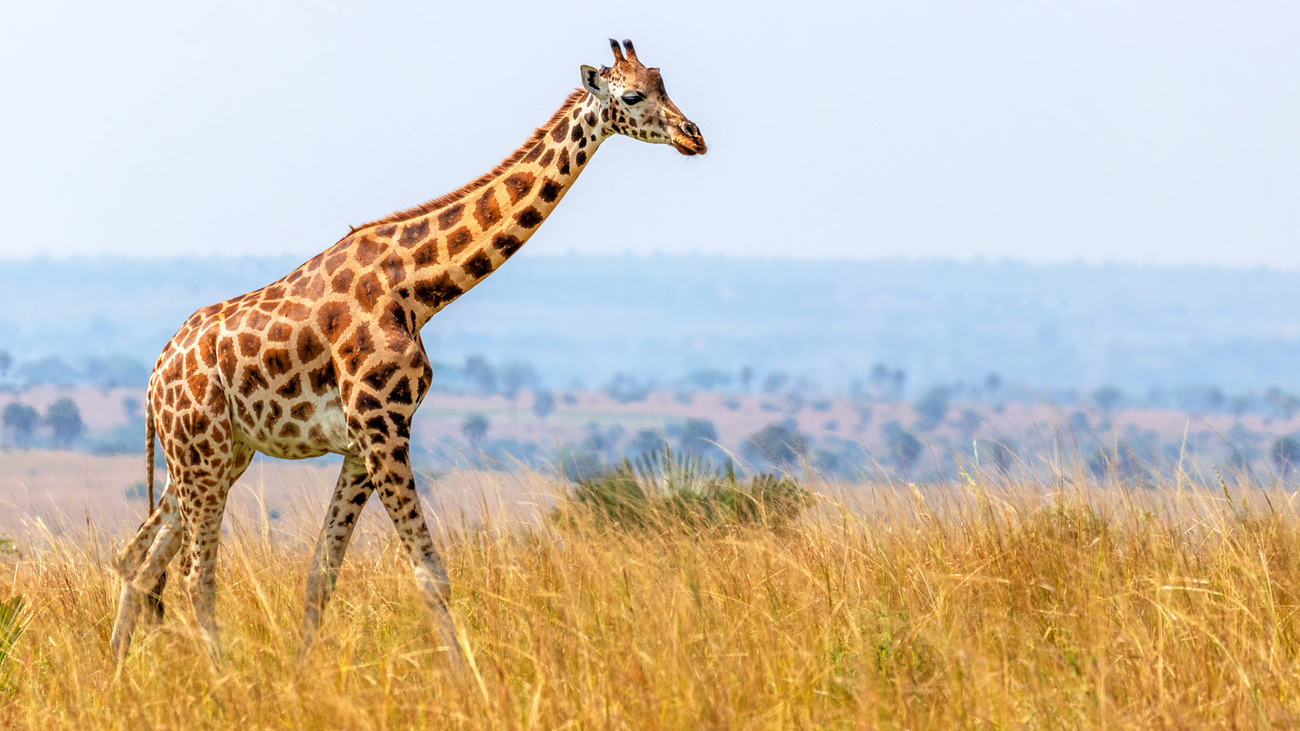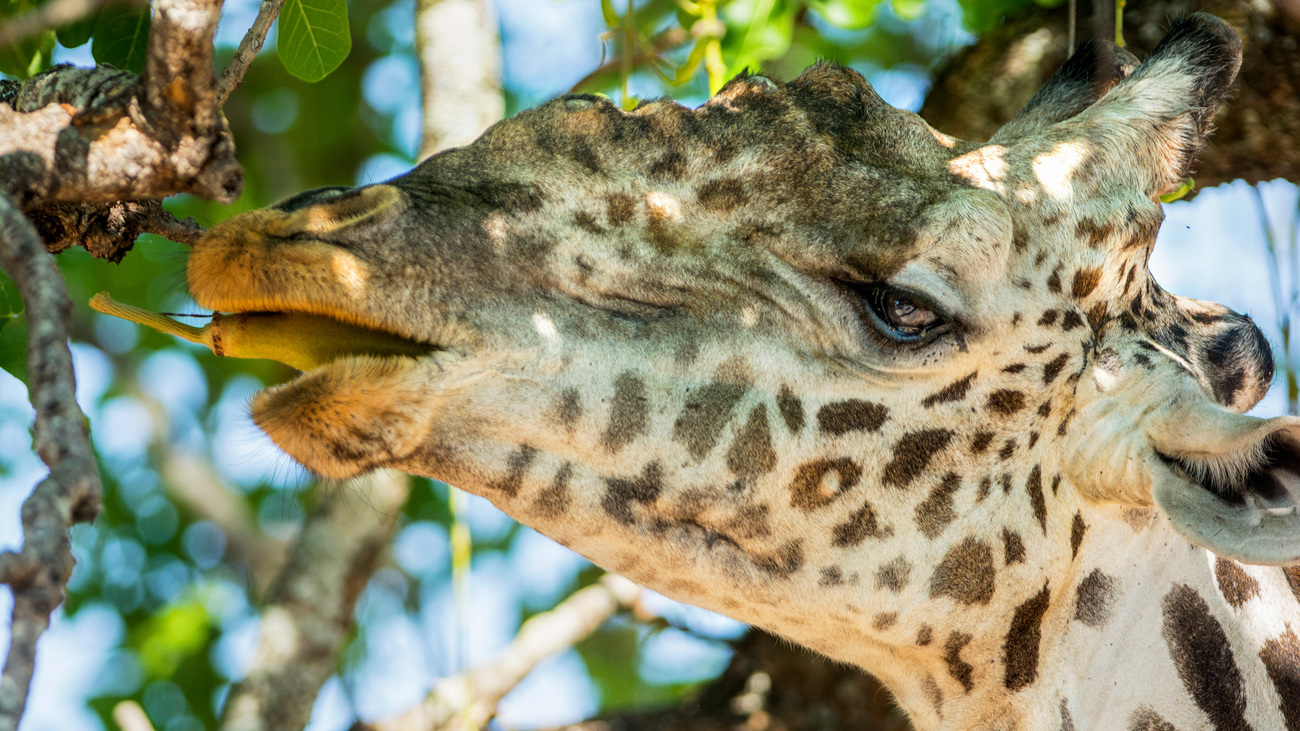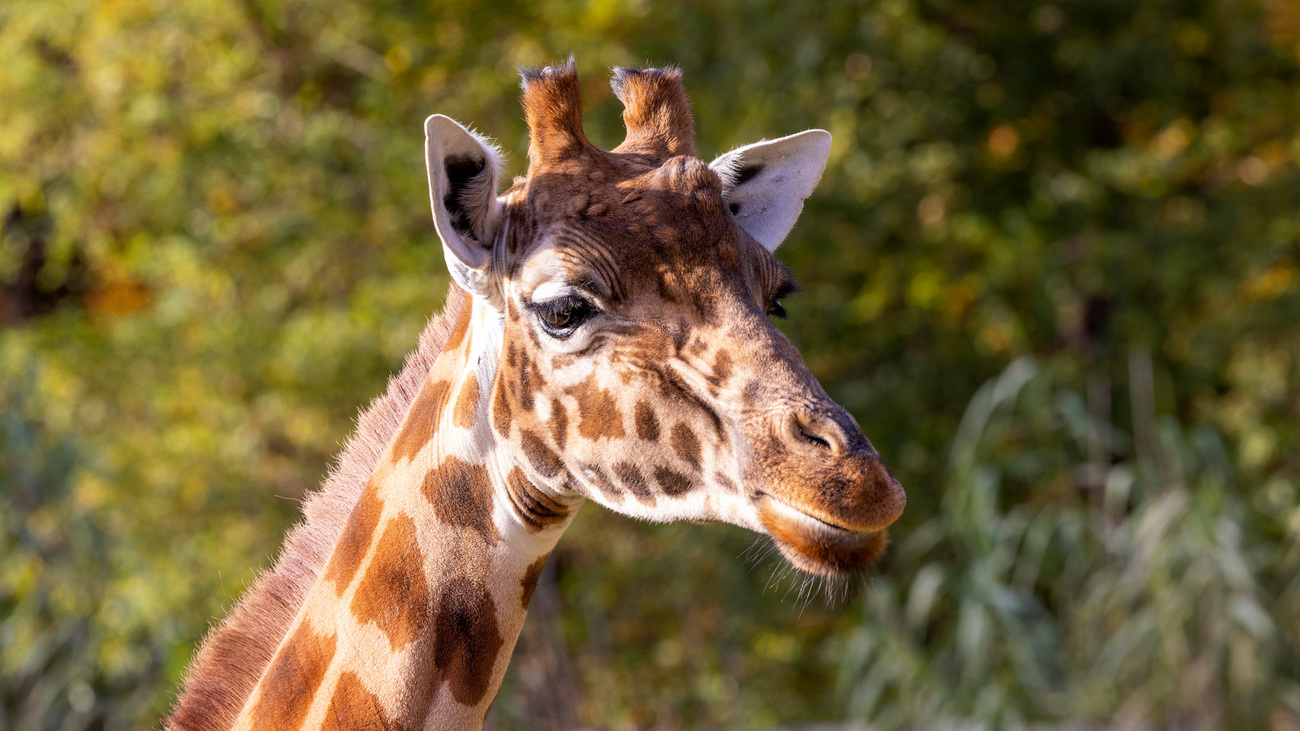Blog
Vultures: Nature’s cleanup crew and wildlife detectives
Read moreAre giraffes endangered? The answer to this question is complicated. There are approximately 117,000 giraffes left in the wild, and the IUCN Red List classifies the species as a whole as vulnerable. But the number of giraffes has plummeted dramatically over the past three decades—by up to 40%. Some people refer to this as a ‘silent extinction’ because the decline has been so slow that it’s almost gone unnoticed.

But luckily, conservationists are paying attention. At IFAW, we are committed to protecting giraffes and preventing further population declines through hands-on conservation efforts, community partnerships, and policy advocacy. In Africa, we partner with rangers to find and rescue injured or vulnerable giraffes. In 2023, we helped rangers get water to 12 Masai giraffes that had been cut off from their water supply by farmers’ fences. We’ve also contributed to policy changes benefitting giraffes.
The factors disrupting giraffes’ way of life include habitat loss, poaching, drought, human-wildlife conflict, and civil unrest. This World Giraffe Day (21 June 2025), here’s what you need to know about giraffes and why they’re endangered.
The IUCN Red List classifies the species as a whole as vulnerable. Though giraffes as a species are not considered endangered, some giraffe subspecies are. Out of eight assessed subspecies, two—the reticulated giraffe and the Masai giraffe—are classified as endangered. Another two, the Kordofan giraffe and the Nubian giraffe, are critically endangered. The Kordofan giraffe has lost 90% of its population since the 1980s, and the Nubian giraffe has lost 98%.
Here are the current Red List statuses of the eight assessed giraffe subspecies:

In the wild, there are about 117,000 total remaining giraffes. However, the populations of some subspecies are dwindling dangerously close to extinction. Here’s how many individuals of each type of giraffe are left as of the most recent assessments:
This list includes all subspecies currently assessed by the IUCN. However, in 2016, researchers at the Giraffe Conservation Foundation found genetic evidence indicating that giraffes are four distinct species rather than one.
Based on this information, the IUCN may change how they classify giraffes for their upcoming mid-2025 assessment. They will likely separate giraffes into the following four species:
Under the Convention on International Trade in Endangered Species of Wild Fauna and Flora (CITES), anyone trying to trade internationally in giraffes or their parts will have to prove that the trade is legal and sustainable. Giraffes were given Appendix II protections, which means they are considered threatened but not necessarily threatened with extinction—though they could be if trade is not strictly regulated.
Conservationists see this protection as a huge win because it had previously been impossible to determine the extent to which the decline in giraffe populations was due to trade.
The US is the only country that collects trade data on giraffes. Thanks to this data, we know that almost 40,000 giraffe items were traded in just one decade, from 2006 to 2015.
Like how elephants are targeted for their ivory tusks, poachers target giraffes for their bones. There’s a significant amount of international trade in carvings and trophies made from giraffe bones.
At least 3,751 individual giraffes were killed to trade the nearly 40,000 items imported by the US. This included 21,402 bone carvings, 3,008 skin pieces, and 3,744 hunting trophies.
In 2019, giraffes were finally given protection from trade under CITES. ‘This listing on Appendix II [of CITES] is an important step in regulating giraffe trade, preventing any illegal and unsustainable trade and helping to safeguard this iconic species for future generations,’ stated Matt Collis, IFAW's Senior Director of Policy, following the win for giraffes at CITES COP18.

An additional hindrance to their population growth is the fact that giraffes reproduce slowly. Typically, mother giraffes are pregnant for about 15 months and give birth to only one calf at a time. While the average female giraffe will have five calves throughout her lifetime, only half will likely survive to adulthood.
Ongoing drought in the Horn of Africa region—particularly in Kenya—threatens the lives of many giraffes. More than 6,000 animals perished from drought in Kenya from June to November 2022, including 93 endangered Masai giraffe. This drought is the worst the region has experienced in four decades.
As watering holes and rivers dry up, these giraffes roam into human-populated areas in search of water. This often incites human-wildlife conflict—the result of a lack of resources for both people and animals. Clashes between giraffes and people who perceive them as threats can be deadly for both parties involved.
In addition to these threats, giraffes are also experiencing a widespread skin disease that causes lesions. Habitat fragmentation also causes increased inbreeding, which can make them more susceptible to disease.
After much campaigning from IFAW and other conservation organisations and in response to declining giraffe populations, the U.S. Fish and Wildlife Service (FWS) recently recommended federal protections for several subspecies of giraffes.
The FWS proposed listing all three subspecies of northern giraffe from West, Central, and East Africa as endangered under the Endangered Species Act (ESA). They recommend the following listings:
The FWS recommends listing reticulated and Masai giraffes as threatened species with tailored protections through the ESA’s section 4(d), which directs the US Secretary of the Interior to issue protective regulations necessary for the conservation of threatened species.
This recommendation is important because, even though giraffes are not native to the US, the Endangered Species Act is designed to help protect endangered and threatened species domestically and abroad. The ESA is one part of the US’ commitment to conserving species facing extinction. Several international treaties and agreements the US has with other countries are also major aspects of these efforts.
So, while the ESA only applies to people under US jurisdiction, listing giraffes as an endangered or threatened species can help:
Now, we’re asking the FWS to take the next step—giving giraffes the protections they deserve.
IFAW is working hard to keep giraffes safe. The heroes on the ground include a trained and well-equipped ranger force, including national park rangers, law enforcement officers, and members of local communities. These workers openly share information and use high-tech data collection to detect crime before it happens and prevent poaching.
In many areas, the decline of giraffes is all too visible. While they once populated much of the semi-arid and savannah woodlands of Africa, they’ve become extinct in seven countries. Protecting them where they still remain is their only hope for continued survival.

While giraffes aren’t necessarily threatened with extinction today, they may be in the coming years if poaching and habitat loss continue.
In the US, we are petitioning the government to add giraffes to the Endangered Species Act (ESA) as an endangered animal. Adding giraffes to the ESA would put an end to much of the giraffe trade that enters the country. If you live in the US, you can urge your elected official to support this decision by adding your name.
It’s also important to avoid purchasing giraffe products. Ending the trade in giraffe parts starts with reducing demand.
You can also donate to support our conservation efforts and ranger teams, who work tirelessly on the ground every day to protect giraffes and other vulnerable animals.
Our work can’t get done without you. Please give what you can to help animals thrive.
Unfortunately, the browser you use is outdated and does not allow you to display the site correctly. Please install any of the modern browsers, for example:
Google Chrome Firefox Safari